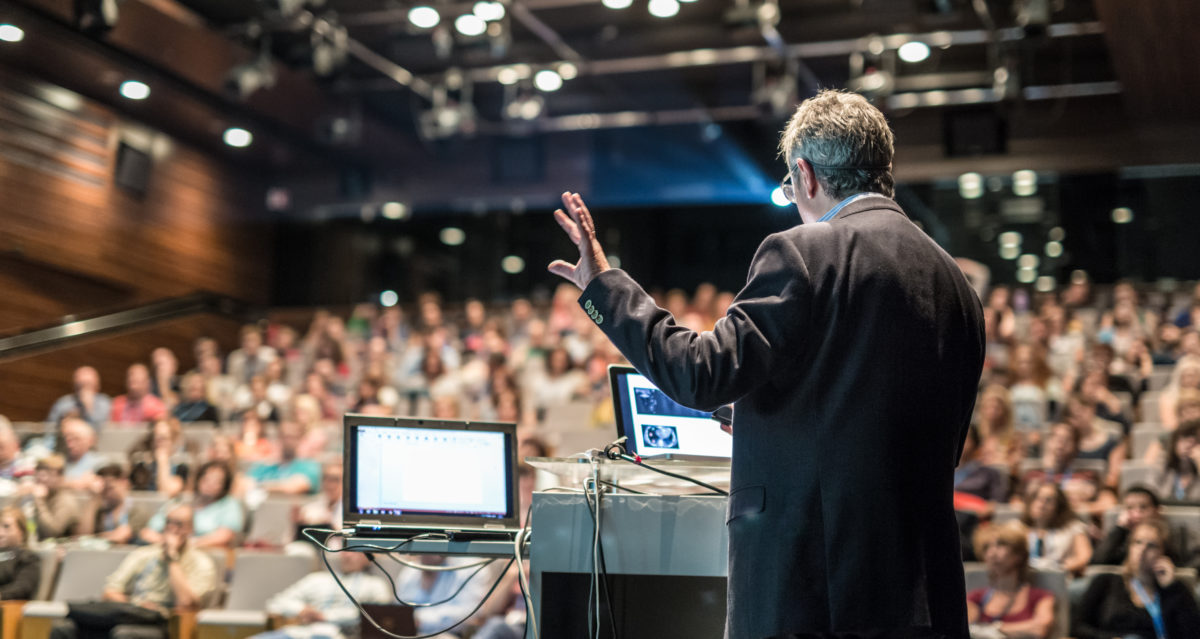While virtual events can be a great way to connect with your audience, it can be difficult to create a truly engaging experience. In this blog post, we’ll explore five common methods to engage virtual event attendees and discuss examples from real virtual events, showing you what actually works. With these tips, you’ll be able to create an engaging experience for your virtual event attendees that is sure to be remembered.
Enable Accessibility Features
The goal of virtual and hybrid event accessibility is to create an inclusive experience for all participants. This involves removing potential obstacles that may hinder someone’s ability to join, participate, and engage in the event. To engage virtual event attendees, you must first ensure that the experience is open to all attendees. While planning your event, make sure you go over the main accessibility considerations to keep accessibility top-of-mind through the planning process.
The Center for Cultural Power emphasized the importance of accessibility when planning Climate Woke, a four-hour event featuring stories from movement leaders in Appalachia, strategy sessions on ecological justice, and various live performances. The World Health Organization estimates that 20% of the global population suffers from hearing loss. It is essential that this group of individuals is able to receive the support they need within virtual events to stay engaged. However, captioning is not only useful to the deaf and hard of hearing. In fact, a recent study by the BBC found that 80% of people who used closed captions between the ages of 18 and 25 do not have any hearing loss. The Center for Cultural Power used both live captioning and ASL interpretation functionalities throughout the event to accommodate the needs of their audience.
Allow Freedom of Movement
Allowing guests to explore the event space, interact with other attendees, and access different areas of the event will keep attendees engaged by ensuring the event is dynamic, and you can cater experiences to each specific attendee.
Hilarity for Charity (HFC), a nonprofit organization founded by Lauren Miller Rogen and Seth Rogen, has ensured guest engagement by allowing participants to attend workshops of their choice during their annual CareCon event. CareCon is a free, virtual event designed to educate participants on Alzheimer’s and honor and connect caregivers. After an opening presentation, guests had the opportunity to join one of three different celebrity panels, offering insights into multiple topics. All sessions were recorded so guests could revisit the panels for information or watch the ones they could not attend live. Later, attendees could choose from 13 different workshops with topics ranging from Laughter Yoga to Writing Through Grief and Loss.
By offering various topics and sessions to choose from, guests could customize the experience to suit their interests. This flexibility allowed attendees to explore the event space, interact with other attendees, and access different areas, making for a dynamic and engaging event. HFC has set a great example for other nonprofits to follow to create engaging events.
Encourage Networking
Networking is an important aspect of any virtual event, as it allows attendees to connect with like-minded people, learn from each other, and form relationships. Networking is a key factor influencing whether people attend an event, with an overwhelming 76% of people citing networking opportunities as one of the main reasons they consider. By encouraging social interaction, attendees will also establish a stronger connection with the event. Virtual networking can have many advantages over its in-person counterpart including accessibility, cost-effectiveness, and increased flexibility.
NASA ensured networking was encouraged during the 2022 Human Research Program Investigators’ Workshop, which they held virtually. During the event, NASA dedicated a portion of time to an expert speed-matching session, allowing attendees to network and exchange contact information as experts facilitated conversations at each table.
Virtual networking is critical for any virtual event and can help attendees establish meaningful connections. By providing dedicated networking time and virtual networking lounges, NASA ensured that attendees could connect with one another and expand their professional networks.
Offer Incentives
Incentives can give prospective attendees the push they need to join your virtual event. Incentives can be anything from prizes, raffles, gift cards, or exclusive virtual event content.
Incentives will help to build excitement and encourage people to join your virtual event. Ensure the incentives you offer are relevant and valuable to your attendees, and you’ll have more success in getting people to join in.
Stamps.com hosted a virtual holiday party, allowing guests to come and go as they pleased. Hosts drew a virtual raffle winner every half hour to keep guests engaged. This incentive kept attendance consistent throughout the event and ensured the party engaged guests throughout the event.
Host Live Q&A sessions
Live Q&A sessions are a great way to engage virtual event attendees by providing an interactive experience. Setting time aside for a live Q&A can provide a more personal touch to virtual events, allowing attendees to connect with the speaker or panel on a deeper level. In fact, 92% of webinar attendees want a live Q&A following the session.
To encourage productive and engaging Q&As, it is important to create a set of ground rules for both attendees and hosts. Attendee rules should include guidelines on submitting questions, selecting questions, and when the speaker will answer them.
The host and moderator should discuss how long each answer should be, and how to manage disruptive members. Moderating the Q&A session can help ensure all questions are answered and the discussion stays on track.
Beyond Status, a short film showcase produced by The Center for Cultural Power, hosted a live Q&A session following the virtual film festival. The Q&A session was an excellent opportunity for audience members to gain a greater insight into the personal stories behind the films and engage in meaningful dialogue with the filmmakers. It also allowed the filmmakers to expand upon their personal stories and share their perspectives on the issues they addressed in their films. This experience allowed the audience to connect with the filmmakers and to gain a deeper understanding of the stories behind the films.
Design your most engaging virtual event yet
Whether you’re hosting a virtual conference, webinar, happy hour, or something in-between, these strategies will help you create an event that encourages engagement and connection. By utilizing these techniques, you can build a truly engaging virtual event that your attendees will enjoy and remember for years.
We’ve created Frameable Events with an emphasis on engagement, complete with an intuitive and attractive user experience. Learn more about Frameable Events and get started with us today to host your next event.







